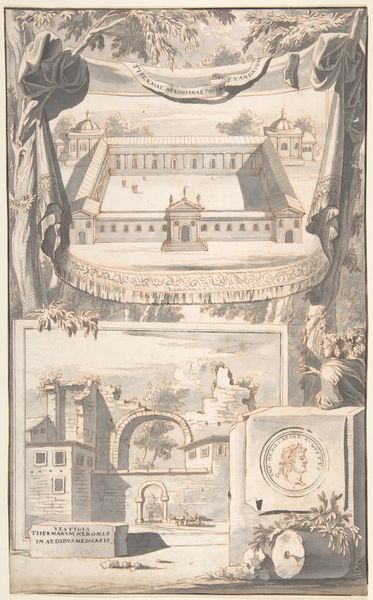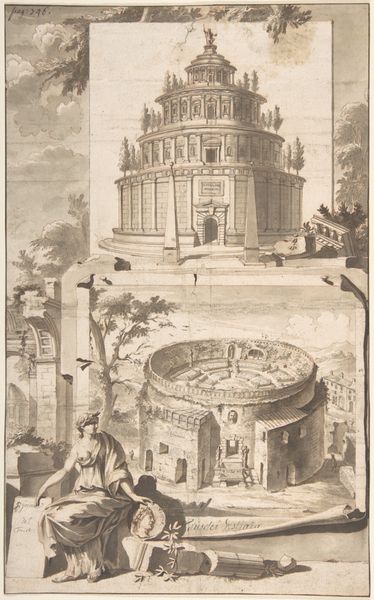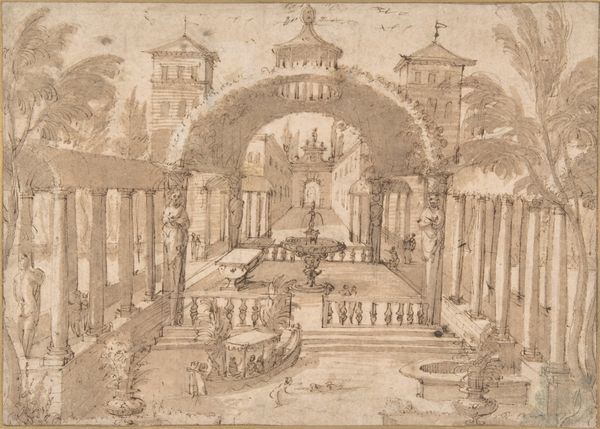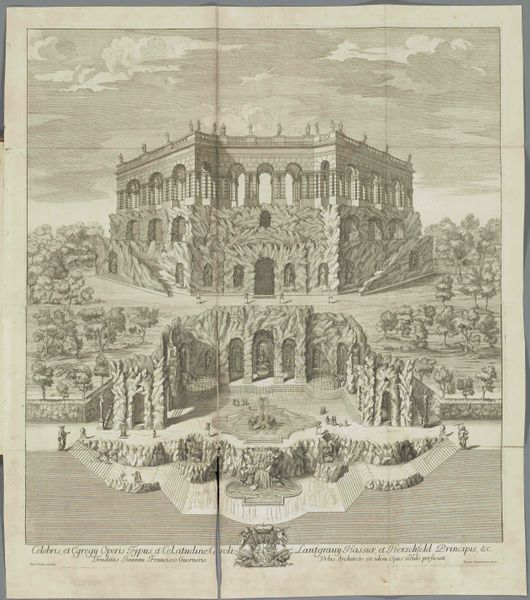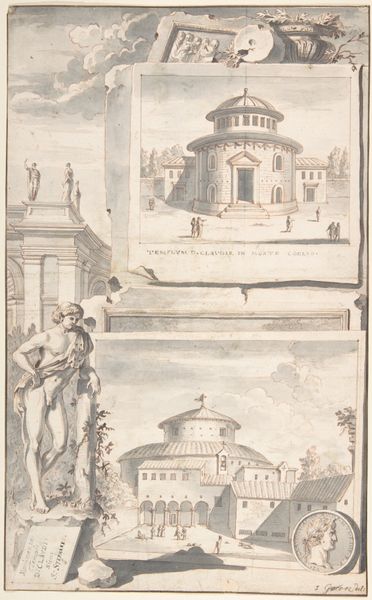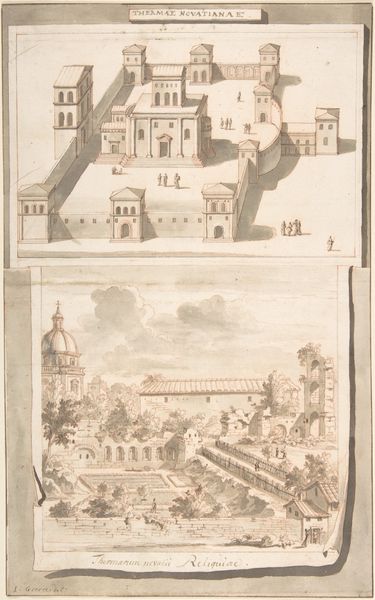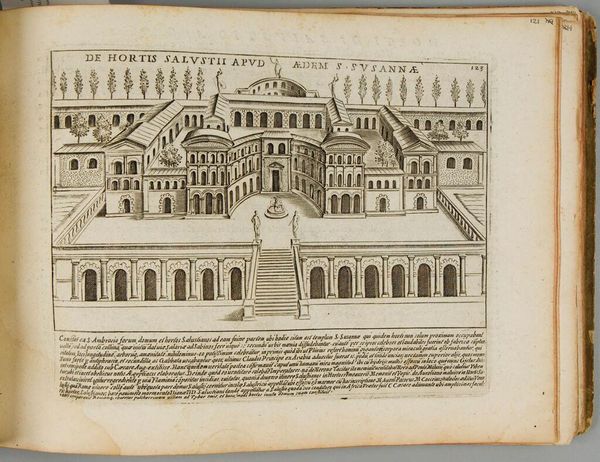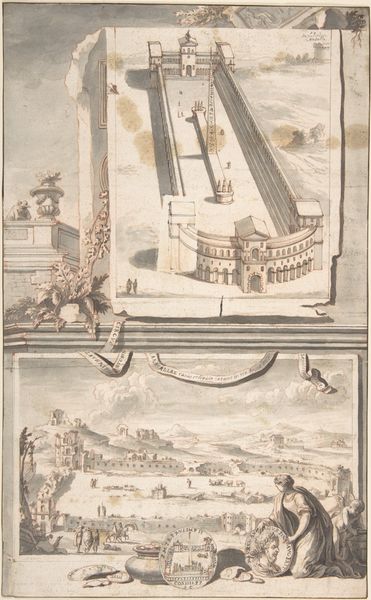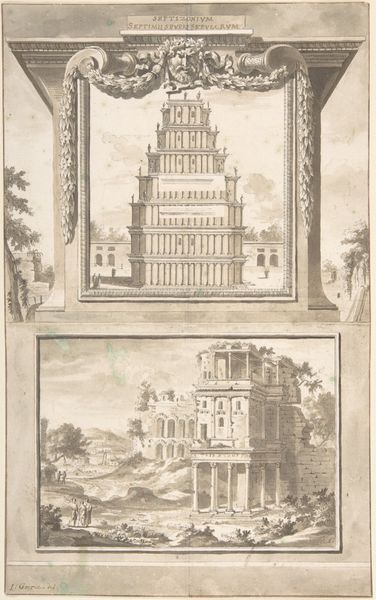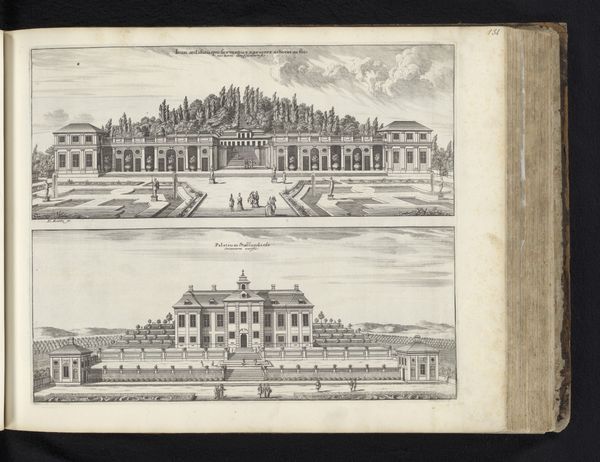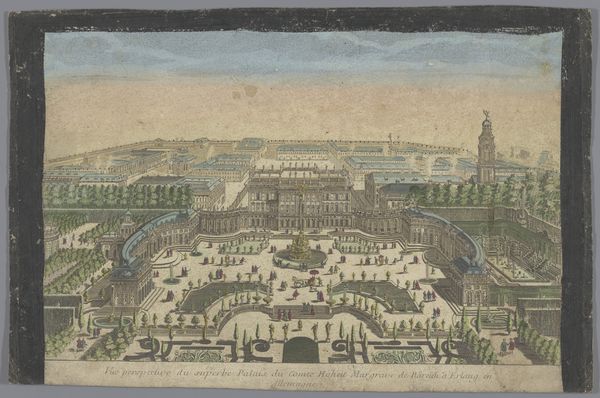
Reconstruction of the Thermae Olympiadis (above) and View of the Ruins (below) 1690 - 1704
0:00
0:00
drawing, print, etching, watercolor, architecture
#
drawing
# print
#
etching
#
landscape
#
etching
#
romanesque
#
watercolor
#
history-painting
#
architecture
Dimensions: 13 x 8 1/16 in. (33.0 x 20.5 cm)
Copyright: Public Domain
Editor: This etching and watercolor by Jan Goeree, titled "Reconstruction of the Thermae Olympiadis (above) and View of the Ruins (below)," dating from around 1690 to 1704, presents a stark contrast between a pristine architectural vision and its dilapidated reality. It’s quite fascinating how it portrays both idealized form and material decay on the same surface. What strikes you most about it? Curator: I'm immediately drawn to the socio-economic implications of presenting these two images together. We see, quite literally, the idealized consumption space—the thermae—juxtaposed with the reality of its ruination. Think about the labor invested in building such a complex, its function as a space for social gathering and potentially political discourse. Then, contrast that with the abandonment and decay. What does that trajectory tell us about shifting power structures and resource allocation? Editor: That's an interesting point! I hadn't really considered the labor aspect, more the visual contrast between ideal and ruin. It makes me think about what happens to the material remnants when a society's priorities shift. How the built environment reflects and embodies societal change. Curator: Precisely. Consider also the act of Goeree creating this print. Etching and watercolor—relatively accessible means of reproduction at the time. Was this image intended for an elite audience, perhaps as a memento mori? Or could it have circulated more broadly, prompting reflections on the ephemerality of power and the labor underpinning grandiose structures? Editor: I see what you mean. The choice of materials and method of production invites questions about the intended audience and purpose, which is something I hadn't previously considered. So much more than just aesthetics! Curator: Yes, and by thinking through the material processes, we start to uncover layers of social and economic meaning that a purely formal analysis might overlook. Editor: Well, this was eye-opening! I definitely will look at art in a more materialist manner from now on. Curator: Wonderful! Considering art's life cycle can enrich our understanding considerably.
Comments
No comments
Be the first to comment and join the conversation on the ultimate creative platform.
